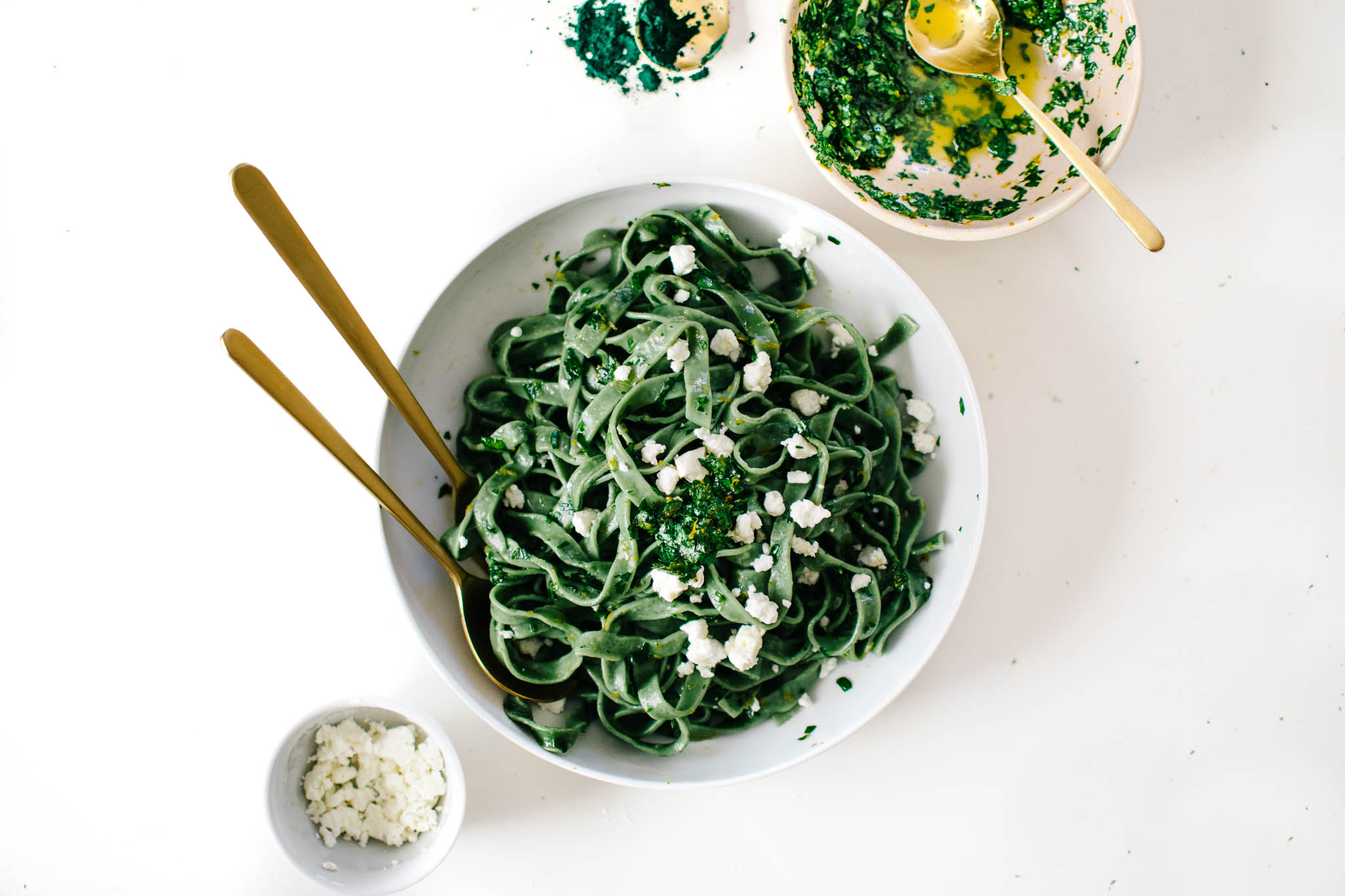
Some time last year, I saw a bright green pasta on my friend Lynn’s Instagram Stories from a food festival. It wasn’t green from spinach, as so many pastas are, but from spirulina—my absolute favorite superfood. I knew I had to have it. It took me a while to gear up to the audacity of making my own pasta, though. I’d only done it once before—an all-semolina dough that wasn’t quite what I’d hoped for. I also didn’t want to offend any Italian friends with my New Age pasta inclinations. So I took my sweet time, planning and dreaming about the toothsome dough and svelte shape of this future green dream pasta.
Last week, I cracked. Sunday morning, I texted my friend Valentina who lives in Gradara, on Italy’s Adriatic coast. Am I a crazy person or is this a legitimate Italian thing? I asked. Am I saying terribly offensive things about pasta? She assured me that, while adding spirulina to pasta was more of a hippy Italian thing, I wasn’t going to offend anyone with my new wave sensibilities.
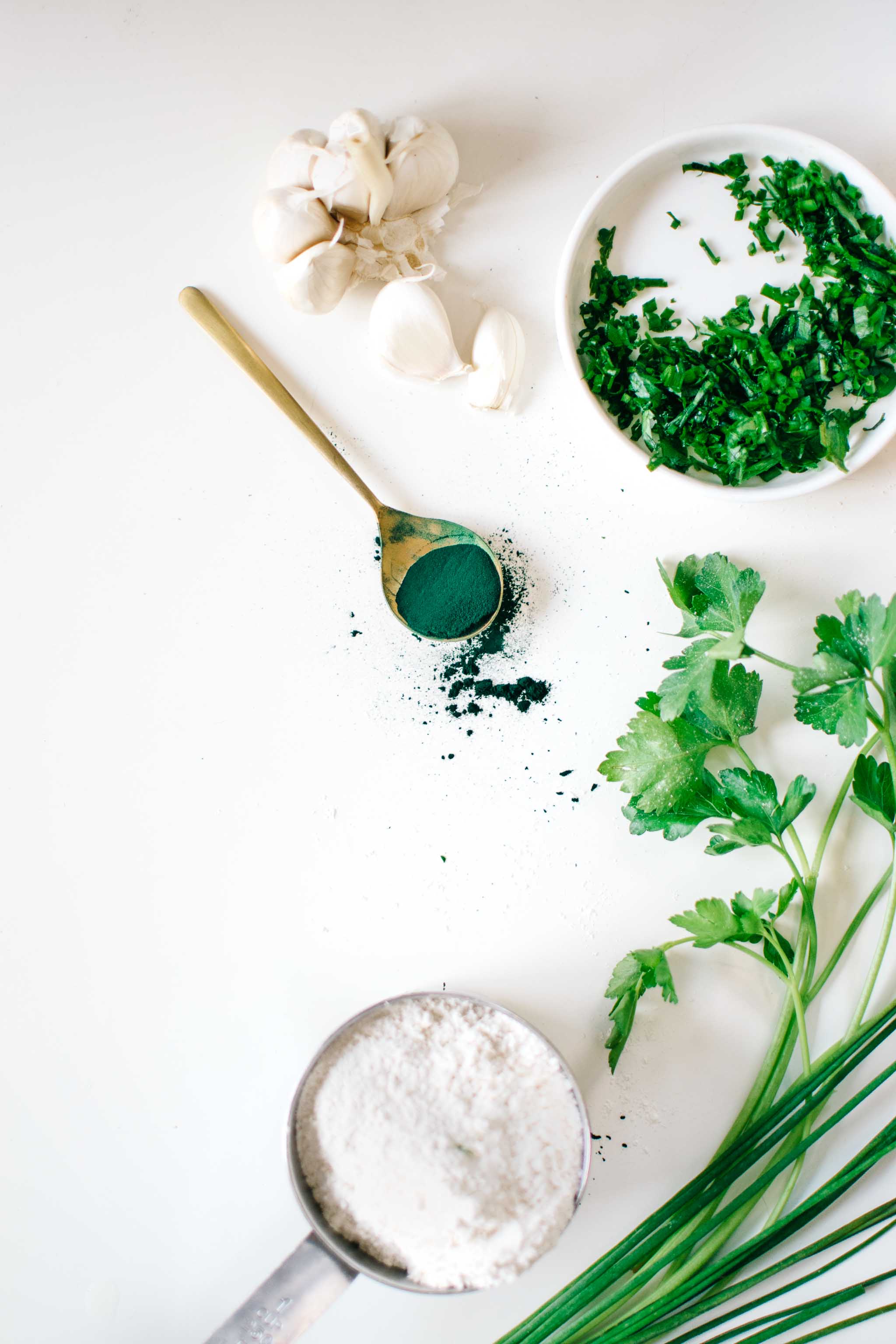
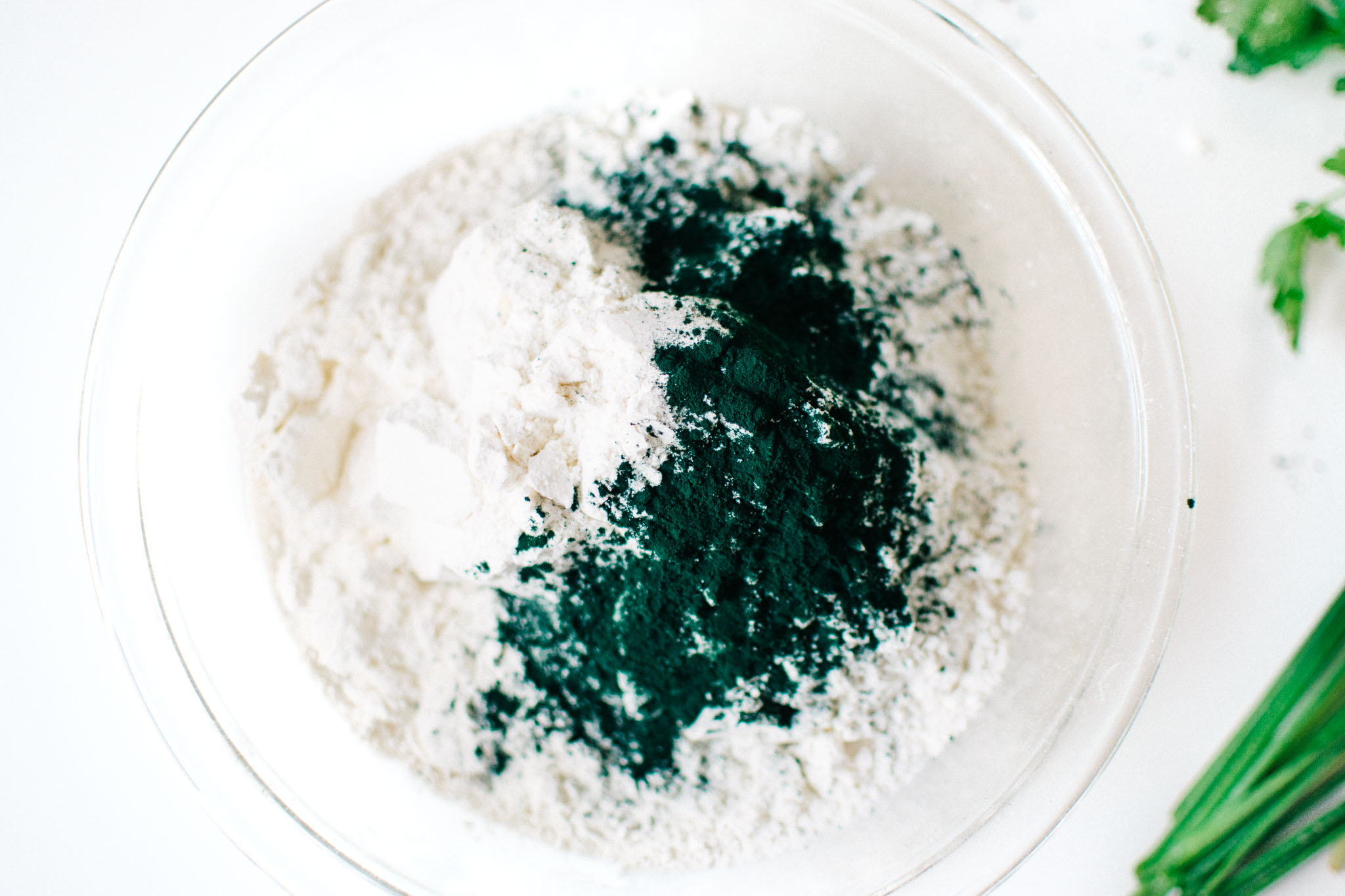
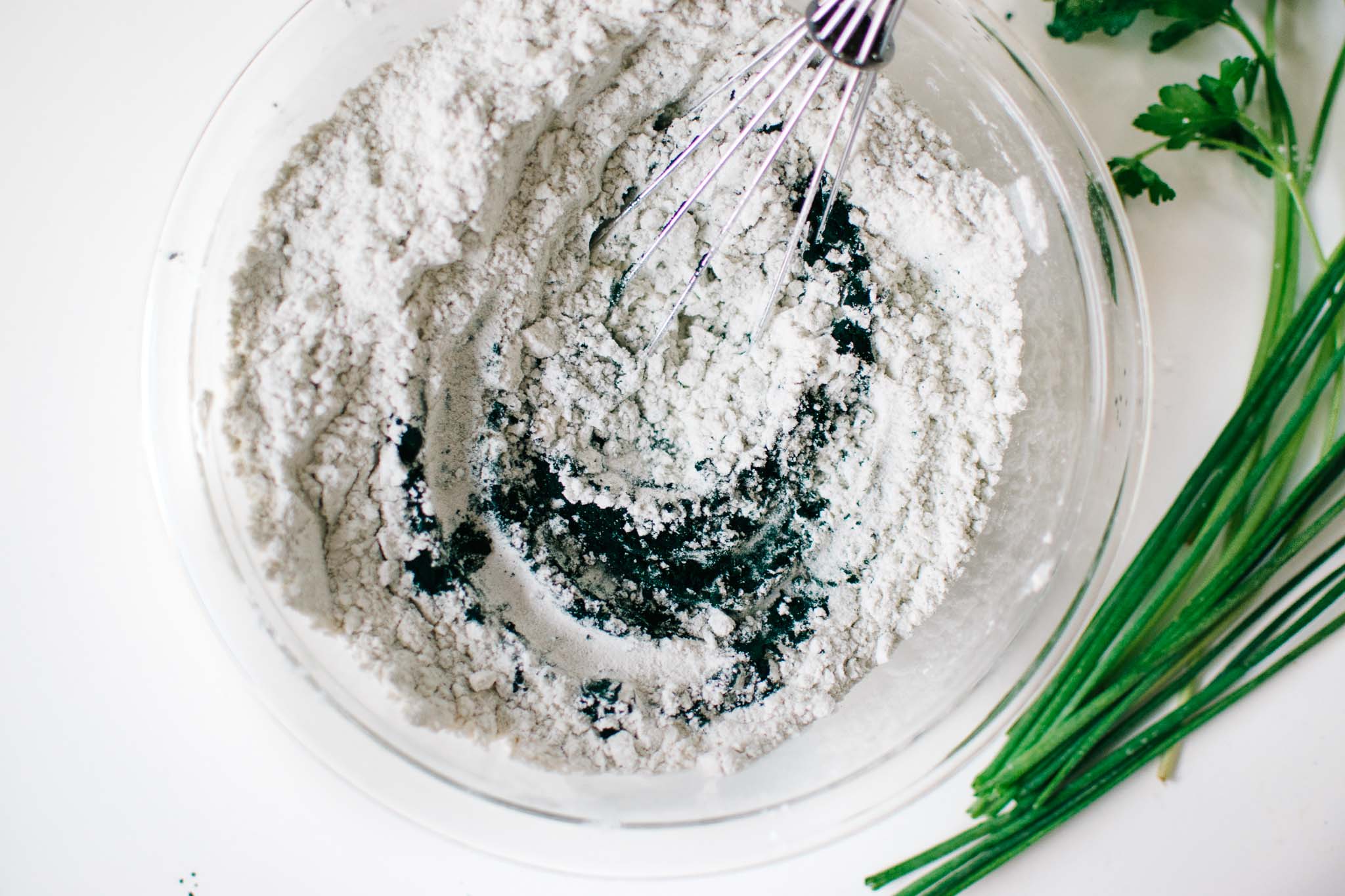
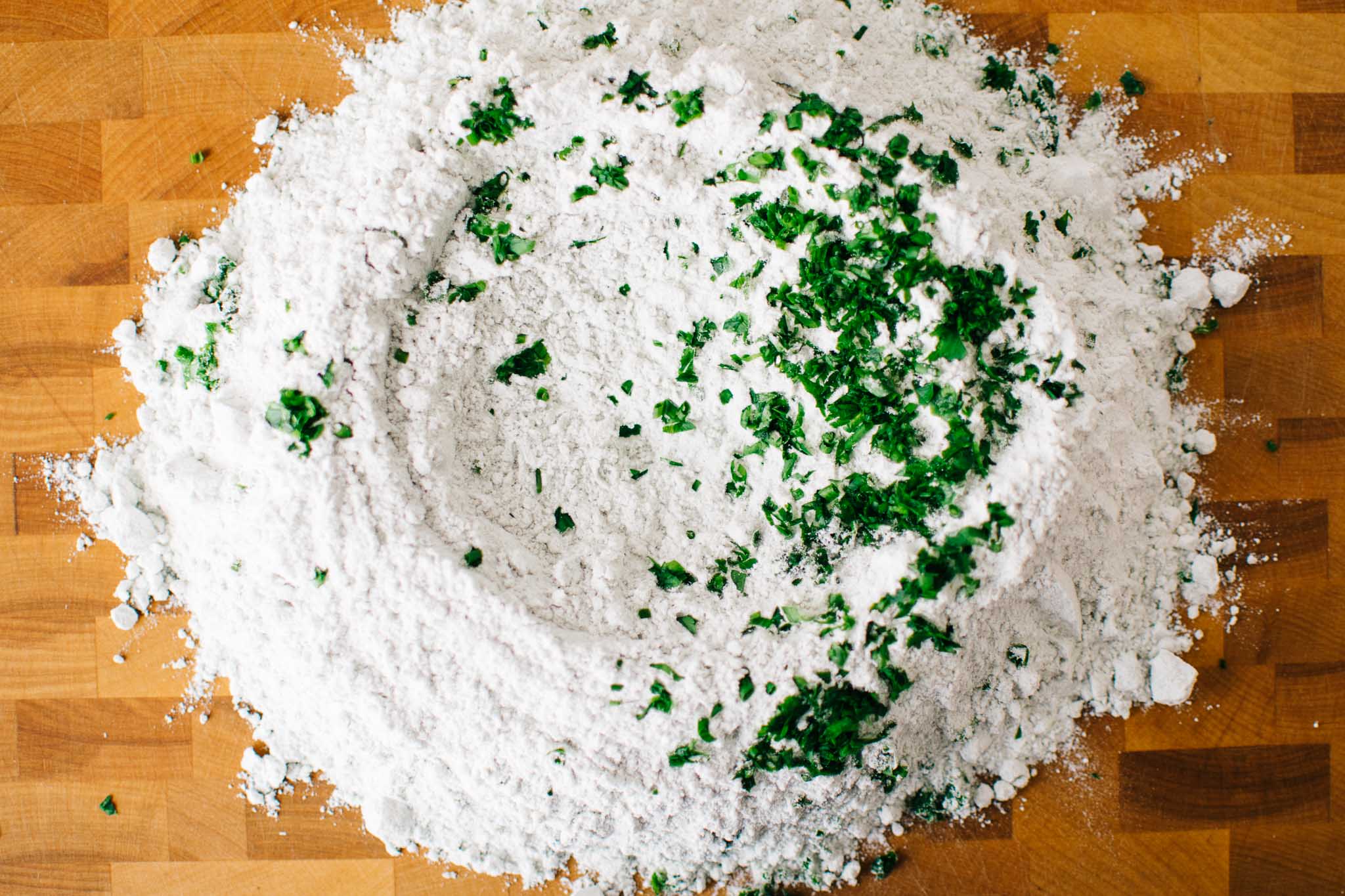
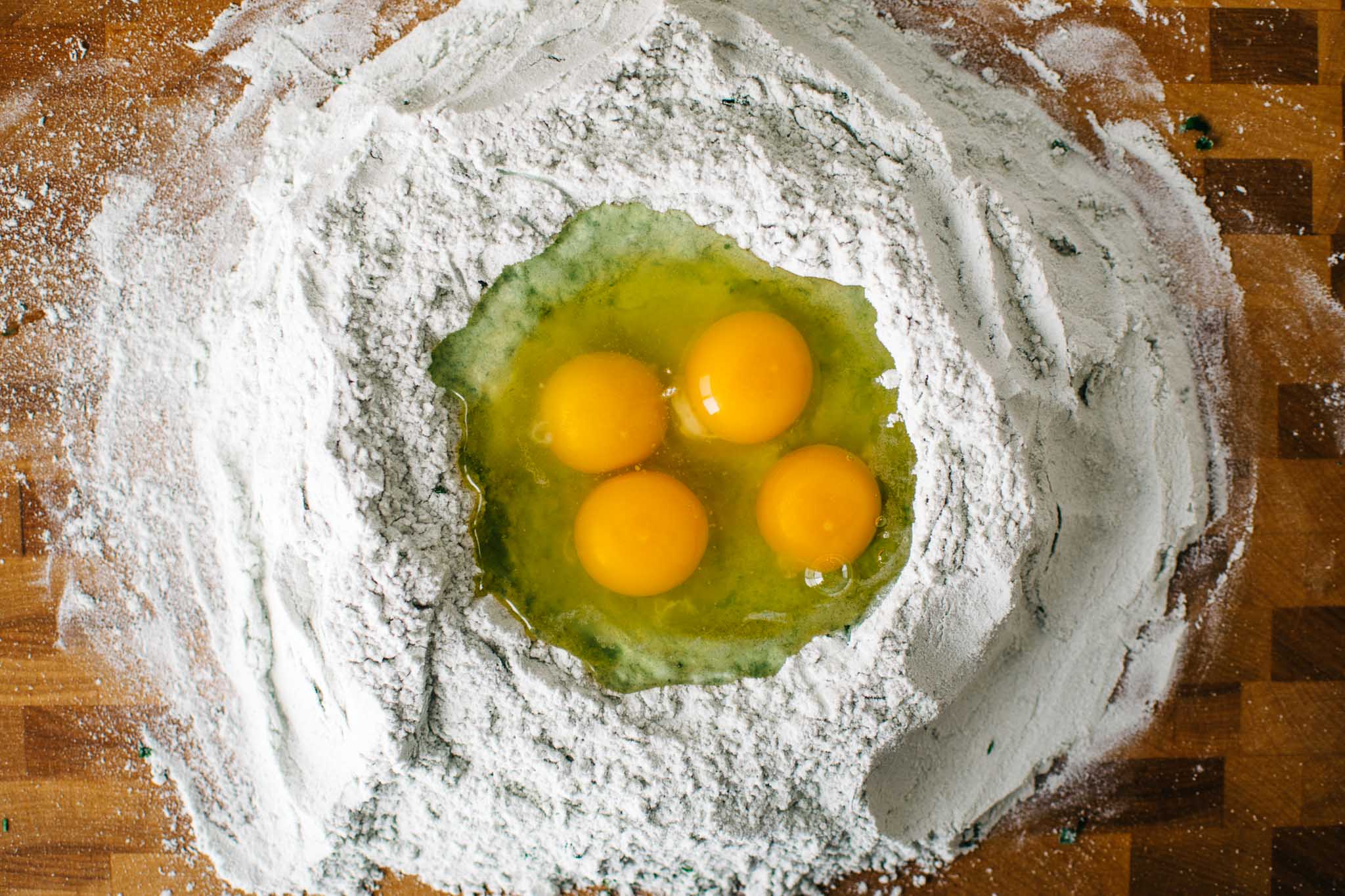
And thus began the process of bringing this deep emerald, herb-packed pasta to life. I experimented with two types of dough, one eggier than the other, and found that I much preferred the slightly less eggy version for its lightness. I used far more water than anticipated, but the chemistry involved with adding spirulina must be beyond the scope of my precise understanding.
This pasta is incredibly easy to make, though it took me forever to gear up to it. I’ve been heavy with thought and hormones all week (on my cycle), immersed in books that are both delivering inspiration and miring me in that soupy state of pre-creative generation. I feel weighted down. Even the events surrounding International Women’s Day and the resurgence of support for the Women’s March community felt hollow, not enough. Movie trailers claiming to be feminist were both horrifically misogynist and incredibly boring. TV shows boasting all-star casts featured hordes of rich white people with nothing better to do than physically abuse one another. I got not one, but two, parking tickets. Really??
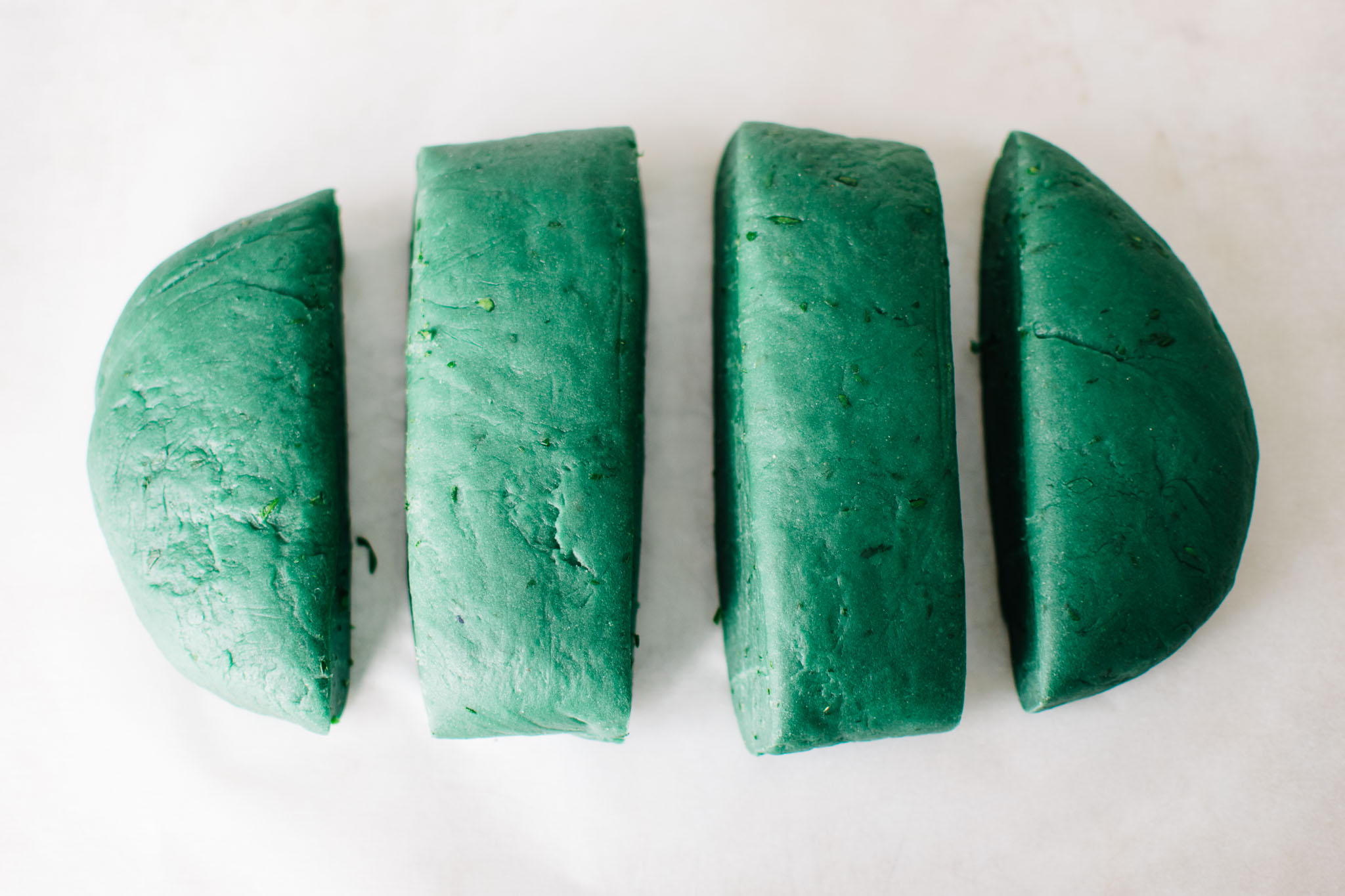
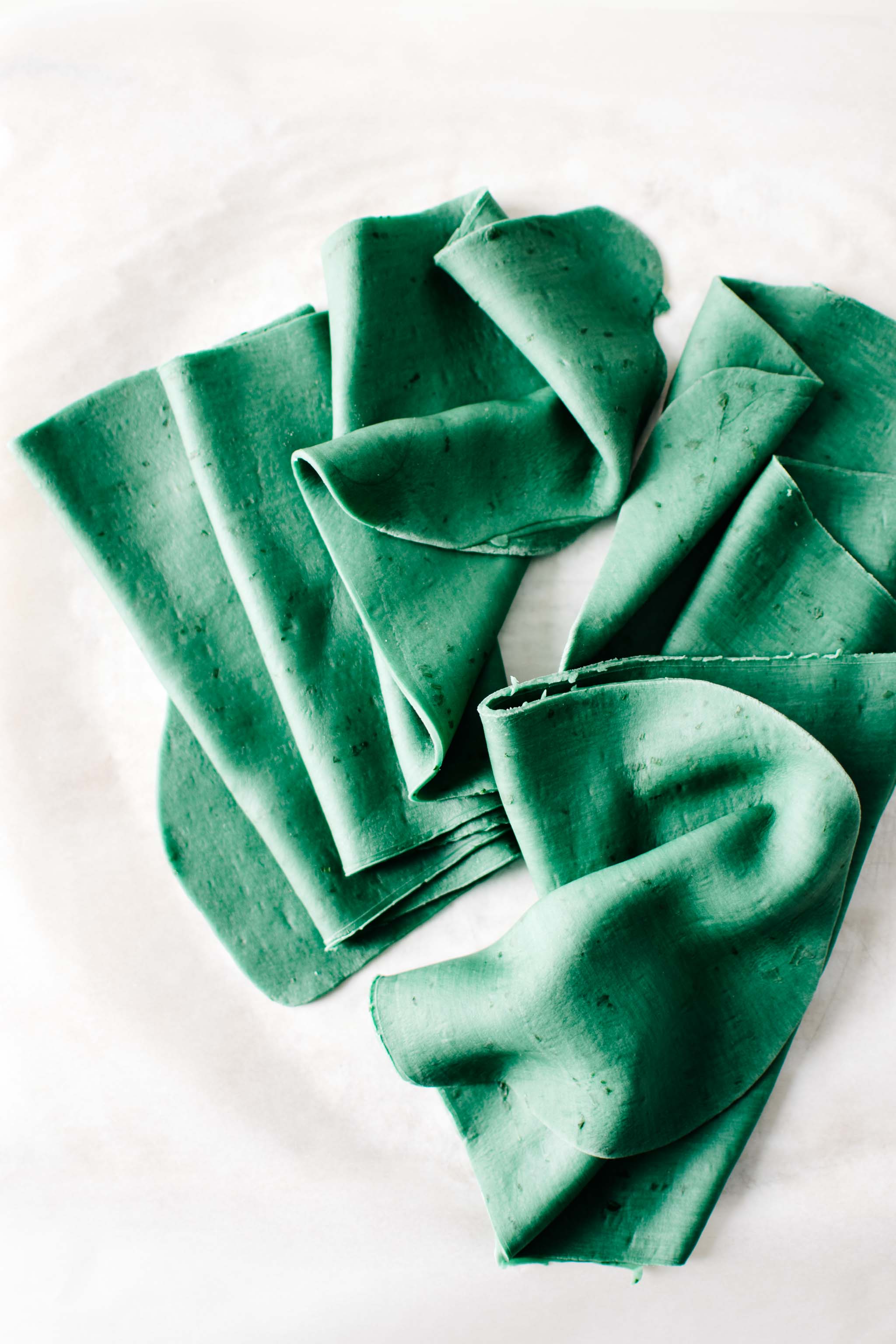
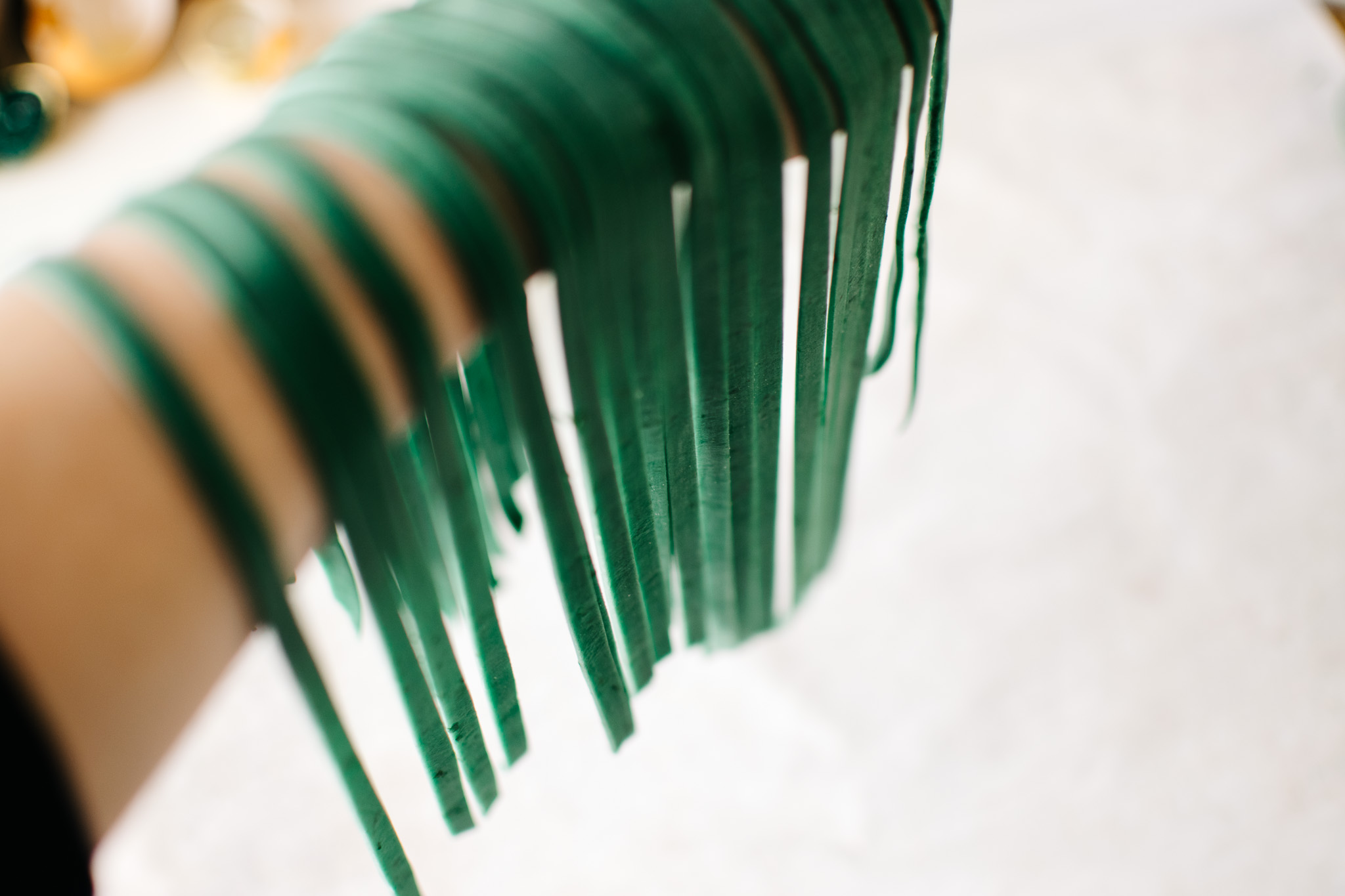
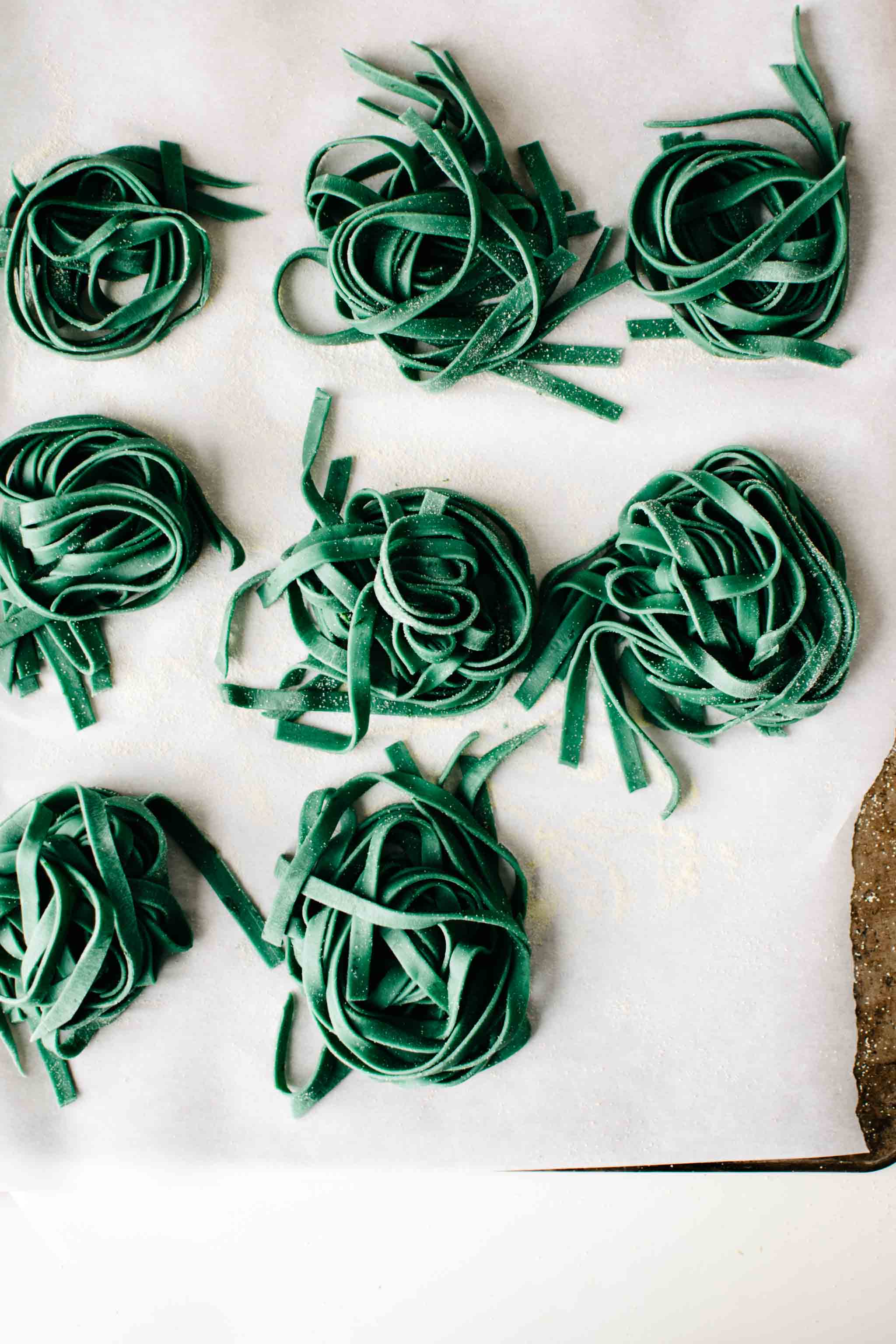
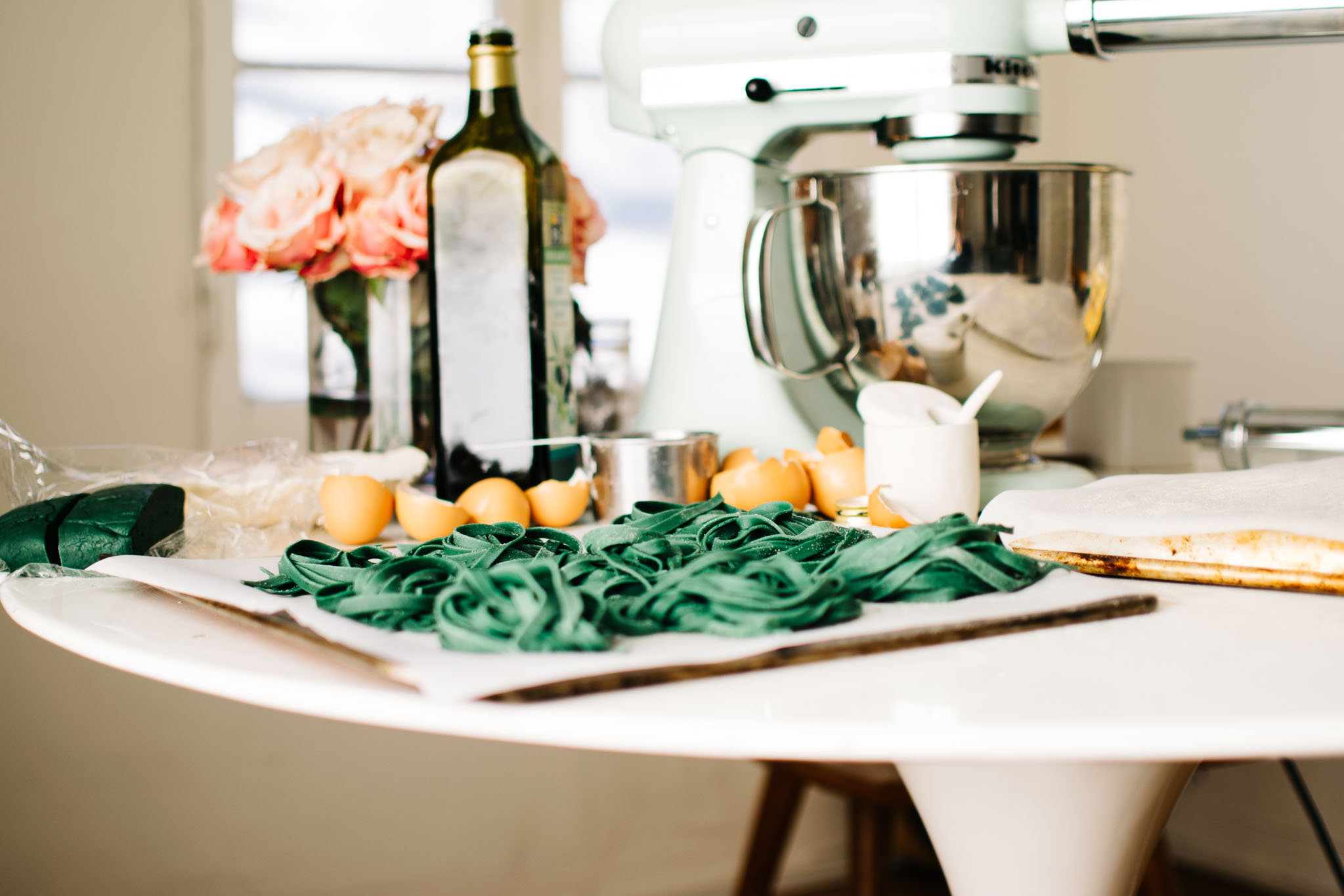
But then there was this pasta dough. The color! Can you believe the color? Breathe that color. Smell it. Taste it. Green like the most verdant corner of the rainforest. Green like a still pond. Green like the glimmer of the Emerald City in The Wizard of Oz. Like the affirmation that Earth is still living, even if she is ailing. Even if we are still being cruel to each other. Even if we humans are still figuring it out.
Can you blame me, then, for wanting even more green on the green? A gremolata, I thought—a few simple pops of oil and parsley and lemon zest and garlic to make the pasta sing. And then some flaky sea salt, for strength of flavor. And some goat cheese, because of course. The taste of the pasta itself is mild, with a subtle salt and ocean flair from the spirulina and a stronger herbal punch from parley and chives.
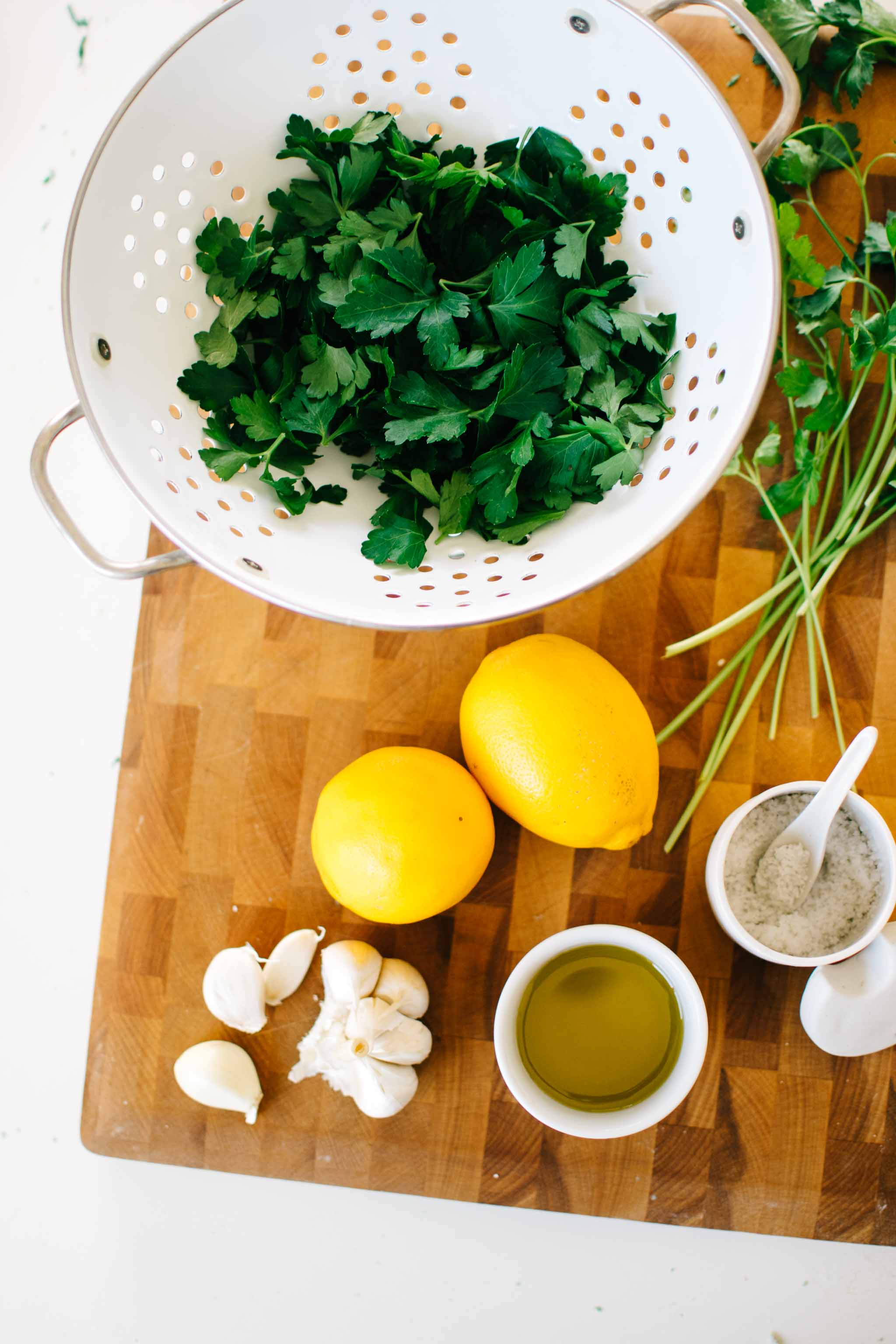

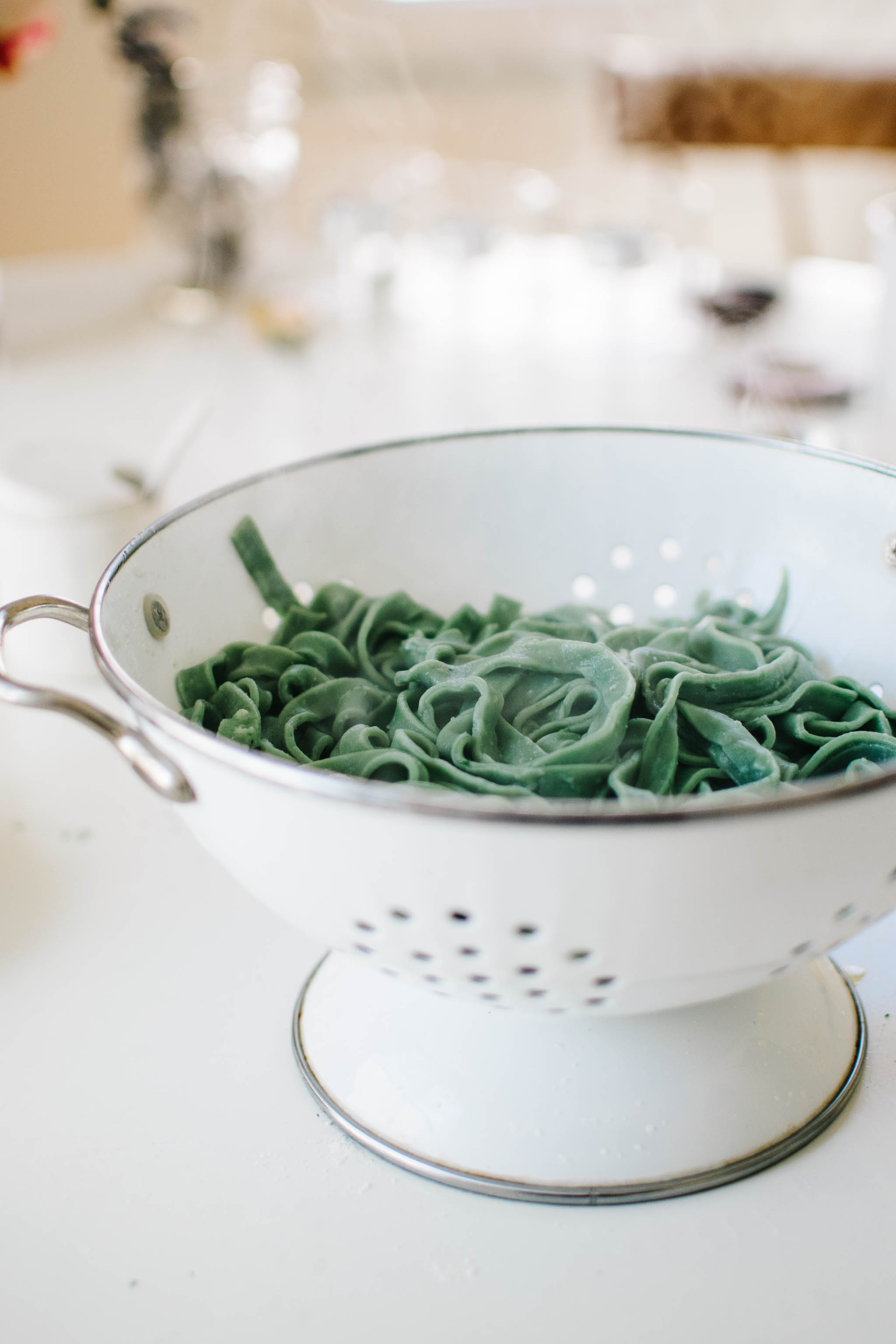
Though I used parsley and chives for the herbs inside the dough, you could use any herb your taste buds desire. Working with these aromatics helped my heavy heart, too. The sharpness of parsley and chive sliced the edge off my wallowing. Kneading dough, the ache of my wrists as they thump-thump-pounded, I worked out frustration and grief and habituated fear. I told myself I could make something beautiful from nothing.
Make this pasta, and make it yours. Do whatever you like to it, with it, on it. Rant and rave and rage with it. Cry through it. Sing to it. Tell it your secrets. Exalt it. Anoint it with your finest oils.
And also, of course, eat it.
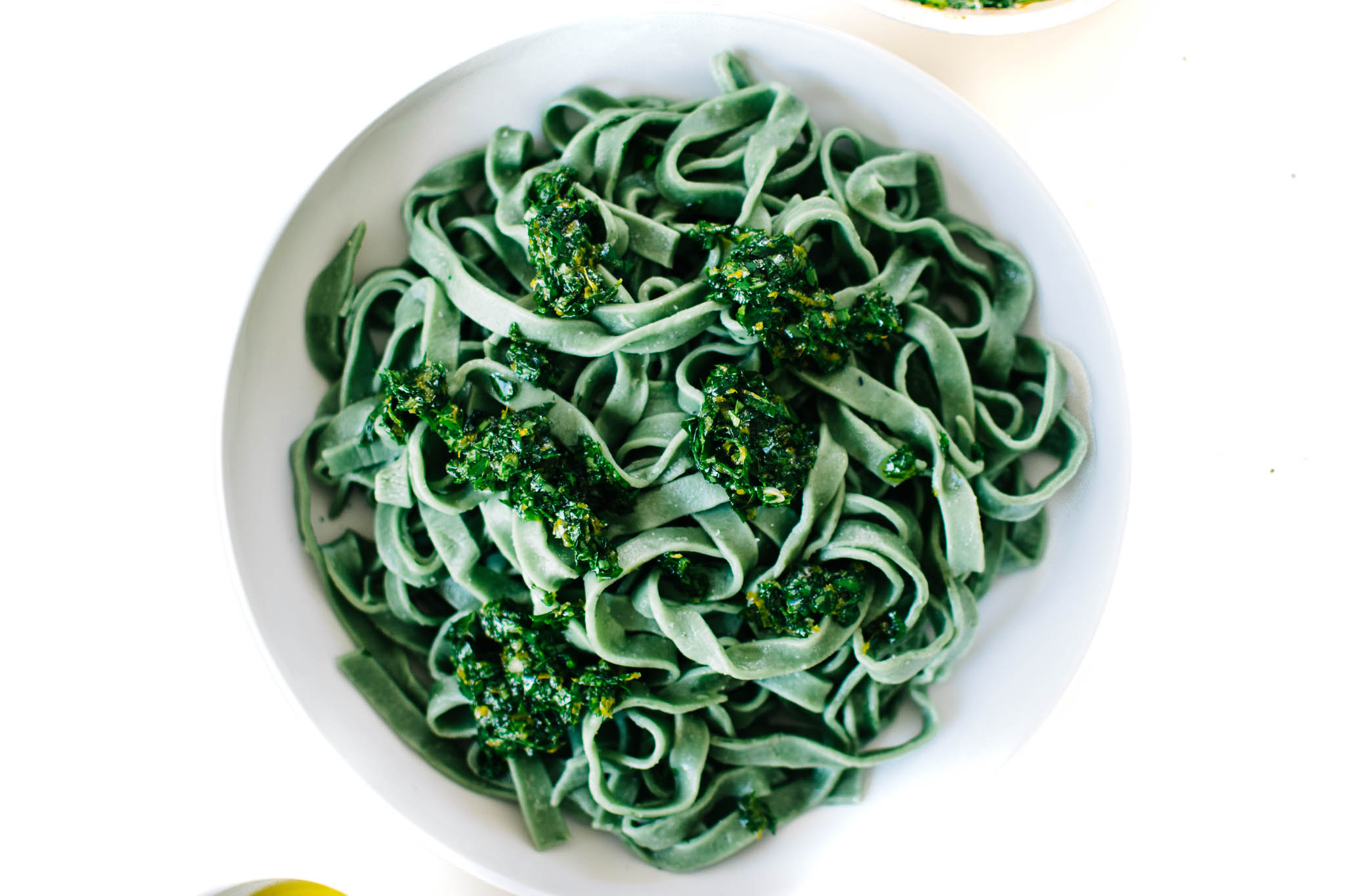
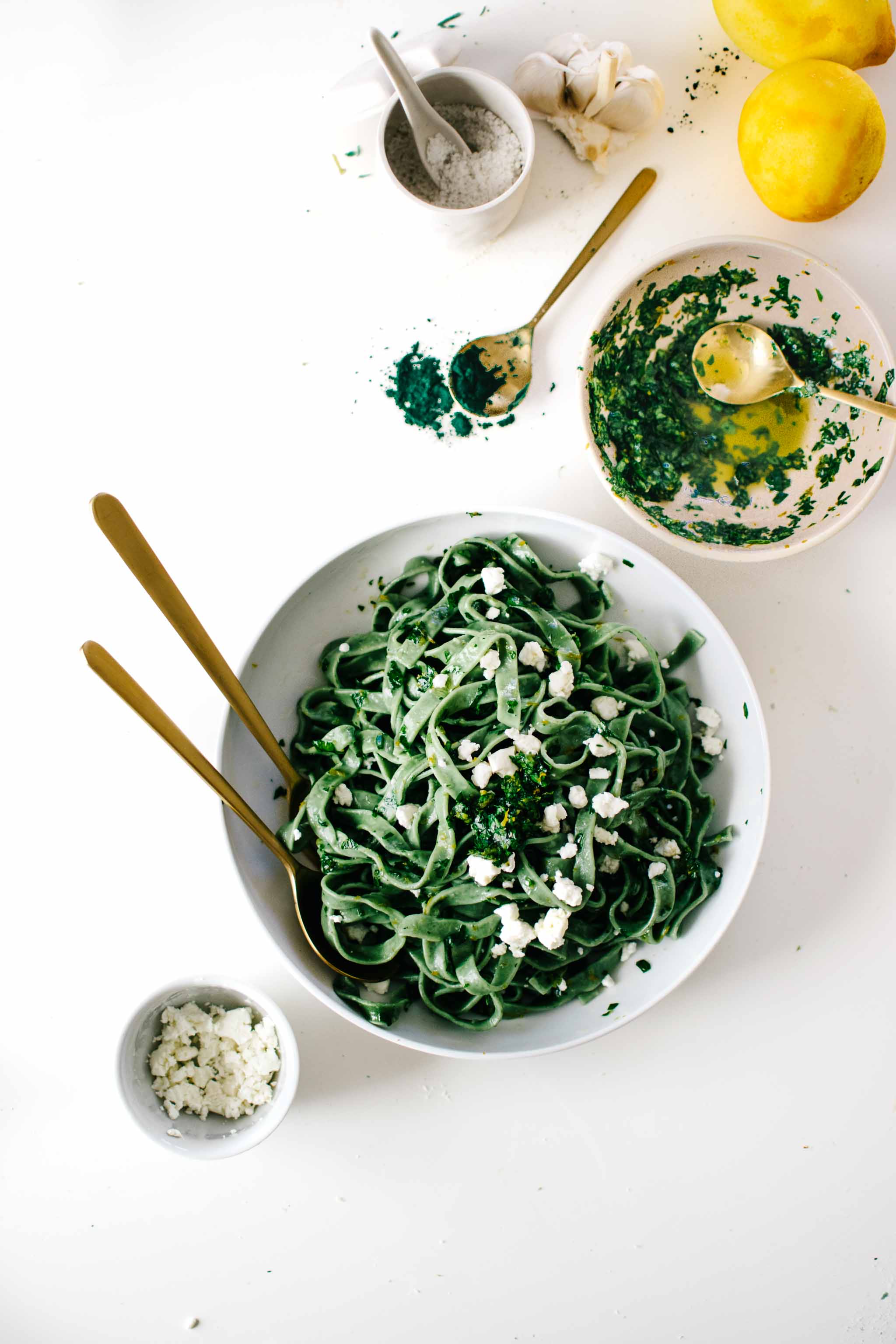
SUPERFOOD GREEN PASTA WITH GREMOLATA & GOAT CHEESE.
Ingredients
Method
- In a large bowl, whisk together the flour and spirulina until completely integrated. Add the minced herbs, and whisk again to combine.
- Transfer the dry mix to a large wooden cutting board, and make a well in the center of the mound. Add the eggs, oil, and water in the well, and begin to whisk together with a fork, using your non-dominant hand to maintain the walls of the flour well as you go.
- Gradually begin to incorporate the dry mix into the egg mixture, continuing to maintain the walls of the well so no leaks occur. As you can, fold the dry mix into the wet and begin to knead into a ball. Continue to knead the dough, adding a bit more water if it's too dry, or more flour if it's too wet. The dough should be soft and elastic, only slightly tacky. Knead another few minutes, then shape into a 1-inch thick oval and wrap in plastic. Let rest 20 minutes to 1 hour.
- While the dough rests, make the gremolata. Combine all ingredients in a small bowl, stir well, cover, and set aside on the counter.
- Line 2 baking sheets with parchment paper for the pasta to rest on once cut.
- Once the dough has rested, divide it into 4 even chunks, and shape those into flattened oval disks. If you are using a pasta machine or pasta-making attachment, follow the manufacturer's instructions for the type of pasta you'd like to make. If you are making pasta without a roller, roll out each disk into as much of a rectangle as possible, ultimately about 1/8- or 1/16-inch thick. Cut as desired with a sharp chef's knife.
- Dust the finished pasta with generous amounts of semolina flour on all sides, and circle it into small nests on the prepared parchment paper. Dust with more semolina. This will prevent the pasta from sticking together and clumping, even after it's cooked.
- Once all pasta has been cut, bring a large pot of salted water to a boil. Cook the pasta in two batches, until al dente (1-3 minutes for very thin pasta, 5-7 minutes for thicker pasta). Use tongs to remove the first batch from the boiling water, so that you can reuse the same water for the second batch.
- Once pasta has cooked, toss it with olive oil. Serve individual portions mixed with spoonfuls of gremolata and a sprinkling of chèvre goat cheese, lemon zest, a drizzle of olive oil, and flaky sea salt.



